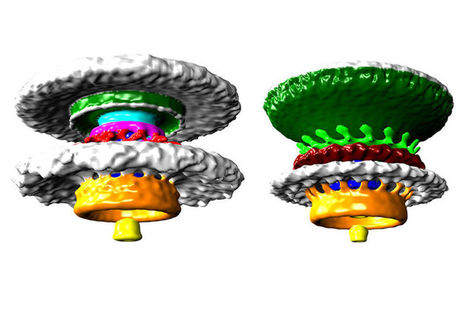"Among bacteria’s many attributes, perhaps one of its most overlooked yet important ones is its ability to propel itself via flagellum, a unique appendage hanging off its end. This mechanism is a perfect example of a naturally occurring, biological wheel. Aside from the beautiful novelty of these images, researchers could study them to develop better motors for nano-robots, or to design better antibiotics that target the flagellum specific to a certain bacteria.[...] Now, for the first time, scientists were able to take a high resolution, 3D look at these wheels at work, using an electron microscope."
Research and publish the best content.
Get Started for FREE
Sign up with Facebook Sign up with X
I don't have a Facebook or a X account
Already have an account: Login
 Your new post is loading... Your new post is loading...
 Your new post is loading... Your new post is loading...
|
|












